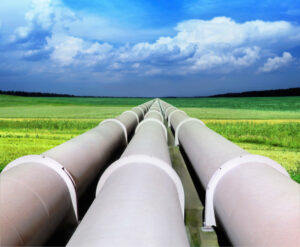The American Petroleum Institute (API) and the Liquids Energy Pipeline Association (LEPA) have released the latest of their annual reports on pipeline safety showing how liquids pipelines have become significantly safer over the last five years.
The analysis, 2024 Pipeline Performance Report, details how total liquids pipeline safety incidents impacting people or the environment have dropped by 13 percent since 2020, including a 33 percent drop in incidents caused by “integrity management issues” and a 22 percent drop in incidents caused by “operations and maintenance issues.”
Overall, there were 42 fewer incidents in 2023 than in 2019, even though the industry has built more than 3,000 additional miles of pipeline in the intervening period and is delivering 15 percent more barrels of liquid. The rate of the number of incidents impacting the environment or people fell from 0.0033 incidents per million barrels of liquid delivered in 2019 to 0.0027 incidents per million barrels delivered in 2023.
Large safety incidents—those of 500 spilled barrels or larger—have declined by 7 percent since 2020 and now represent only 4 percent of total incidents. The report also notes that 66 percent of safety incidents were less than 5 barrels spilled, and 85 percent of incidents were less than 50 barrels spilled.
“Out of sight and out of mind, pipelines consistently deliver the energy our nation depends on with fewer incidents per barrel delivered every year,” said Steven A. Yatauro, chairman of the API-LEPA Pipeline Safety Excellence Steering Committee, in the report’s introduction. “These products are at the root of a vital supply chain that both drives productivity, innovation and growth and provides a wide array of benefits to businesses and consumers. Pipelines remain critical to achieving the goals of energy dominance and energy security while adding lower-carbon options for our country.”
Because supplies of natural gas are limited, and because some politicians try to undermine fossil fuel production at every step, prices are necessarily driven up. Higher electricity costs disproportionally hurt low-income families, who naturally spend a larger percentage of their money keeping the lights on. Adding pipeline infrastructure would lower electricity prices, thereby raising living standards, stimulating long-term economic growth, and creating a substantial increase in net jobs.
Living standards increase because lower-cost electricity frees up money for consumers to purchase additional goods and services, which improve people’s lives. Economic growth and net job numbers would also increase, because the newly available money spent on goods and services would spur job growth throughout the economy.
Instead of trying to shut them down, legislators should work to ensure infrastructure such as pipelines continues to grow and meet ever-increasing demand for fossil fuels. Making sure the necessary pipeline mileage is built to keep up with this demand—or at the very least is kept stationary rather than reduced—remain stationary—is crucial for helping families across the United States take advantage of the economic benefits these pipelines provide.
Heartland Impact can send an expert to your state to testify or brief your caucus; host an event in your state; or send you further information on a topic. Please don’t hesitate to contact us if we can be of assistance! If you have any questions or comments, contact Cameron Sholty, at csholty@heartlandimpact.org or 312/377-4000.


